
(a)
Interpretation:
The structural formula for the given compound has to be drawn.
Concept introduction:
Nomenclature of esters of carboxylic acids:
The acyl group bonded to
The naming of an ester of a
(a)
Explanation of Solution
The name of the compound is given below:
Dimethyl carbonate
From the name, it is clear that two methyl groups are attached to oxygen atoms in the compound and the parent ester group is carbonate.
Thus, the structure of the compound is given below:
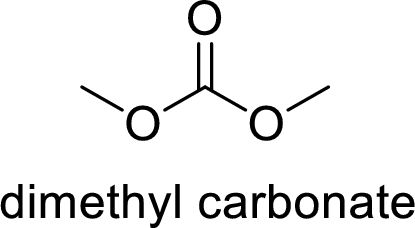
(b)
Interpretation:
The structural formula for the given compound has to be drawn.
Concept introduction:
Nomenclature of nitriles:
The numbering 1 can be given to the nitrile carbon atom and add nitrile to end of the
(b)
Explanation of Solution
The name of the compound is given below:
The functional group is nitrile and benzene ring is attached to it.
Thus, the structure of the compound is given below:
Benzo nitrile
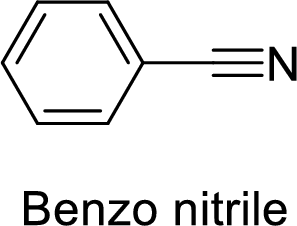
(c)
Interpretation:
The structural formula for the given compound has to be drawn.
Concept introduction:
Nomenclature of esters of carboxylic acids:
The acyl group bonded to
The naming of an ester of a carboxylic acid is done by naming alkyl or aryl group bonded to oxygen first followed by the name of the acid in which the suffix –ic acid is replaced by the suffix –ate.
(c)
Explanation of Solution
The name of the compound is given below:
Isopropyl-3-methylhexanoate
The alkyl group attached on oxygen atom is the isopropyl group and the parent chain is the methylhexanoate.
Thus, the structure of the compound is given below:
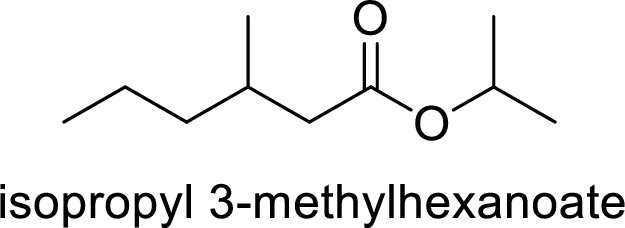
(d)
Interpretation:
The structural formula for the given compound has to be drawn.
Concept introduction:
Nomenclature of esters of carboxylic acids:
The acyl group bonded to
The naming of an ester of a carboxylic acid is done by naming alkyl or aryl group bonded to oxygen first followed by the name of the acid in which the suffix –ic acid is replaced by the suffix –ate.
(d)
Explanation of Solution
The name of the compound is given below:
Diethyl oxalate
From the name, it is clear that two ethyl groups are attached to oxygen atoms in the compound and the parent ester group is oxalate.
Thus, the structure of the compound is given below:
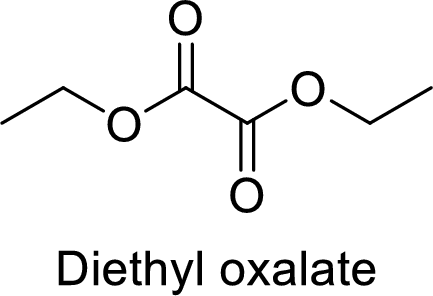
(e)
The structural formula for the given compound has to be drawn.
Concept introduction:
Nomenclature of esters of carboxylic acids:
The acyl group bonded to
The naming of an ester of a carboxylic acid is done by naming alkyl or aryl group bonded to oxygen first followed by the name of the acid in which the suffix –ic acid is replaced by the suffix –ate.
(e)
Explanation of Solution
The name of the compound is given below:
Ethyl (Z)-2-pentenoate
The alkyl group attached on oxygen atom is the ethyl group and the parent chain is the pentenoate. The double bond is having E configuration.
Thus, the structure of the compound is given below:
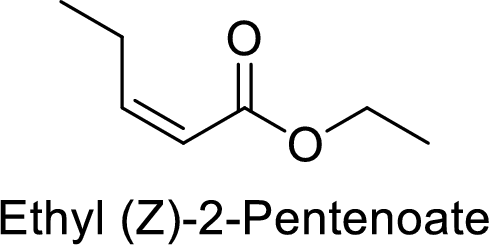
(f)
Interpretation:
The structural formula for the given compound has to be drawn.
Concept introduction:
Nomenclature of anhydrides:
The nomenclature of anhydride involves replacement of the word acid with anhydride. In the case of mixed anhydrides, both acids should be named.
(f)
Explanation of Solution
The name of the compound is given below:
Butanoic anhydride
From the butanoic acid, acid part can be replaced with an anhydride group.
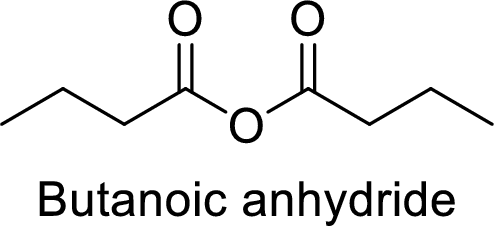
(g)
Interpretation:
The structural formula for the given compound has to be drawn.
Concept introduction:
Nomenclature of amides and imides:
The acyl group bonded to a nitrogen atom is the functional group of an amide.
The naming of an amide can be done by giving the suffix –oic acid from the IUPAC name of the parent acid and adding –amide.
The location of the alkyl or aryl group attached on nitrogen atom in an amide is indicated by ‘N-‘
The indication “ N,N-di-“ is used for two identical alkyl or aryl groups on nitrogen atom
(g)
Explanation of Solution
The name of the compound is given below:
Dodecanamide:
The functional group is amide and the acyl group attached is the dodecane group.
Thus, the structure of the compound is given below:

(h)
The structural formula for the given compound has to be drawn.
Concept introduction:
Nomenclature of esters of carboxylic acids:
The acyl group bonded to
The naming of an ester of a carboxylic acid is done by naming alkyl or aryl group bonded to oxygen first followed by the name of the acid in which the suffix –ic acid is replaced by the suffix –ate.
(h)
Explanation of Solution
The name of the compound is given below:
Ethyl-3-hydroxybutanoate
The alkyl group attached on oxygen atom is the ethyl group and the parent chain is the butanoate and a hydroxyl group is present in the third position.
Thus, the structure of the compound is given below:
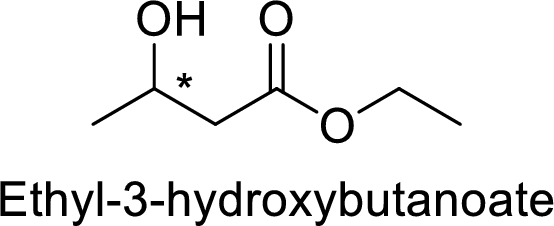
(i)
The structural formula for the given compound has to be drawn.
Concept introduction:
Nomenclature of acid chlorides:
The nomenclture of acid chlorides can be done by replacing –oic acid with –oyl chloride.
(i)
Explanation of Solution
The name of the compound is given below:
Octanoyl chloride
The acid group from the octanoic acid will be replaced by acid chloride group.
Thus, the structure of the compound is given below:
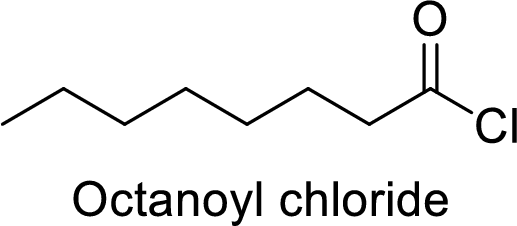
(j)
The structural formula for the given compound has to be drawn.
Concept introduction:
Nomenclature of esters of carboxylic acids:
The acyl group bonded to
The naming of an ester of a carboxylic acid is done by naming alkyl or aryl group bonded to oxygen first followed by the name of the acid in which the suffix –ic acid is replaced by the suffix –ate.
(j)
Explanation of Solution
The name of the compound is given below:
Diethyl cis-1,2-cyclohexanedicarboxylate
The alkyl group attached on oxygen atom are two ethyl groups and the parent chain is the dicarboxylate and a cyclohecxane group is present in the 1,2 position.
Thus, the structure of the compound is given below:
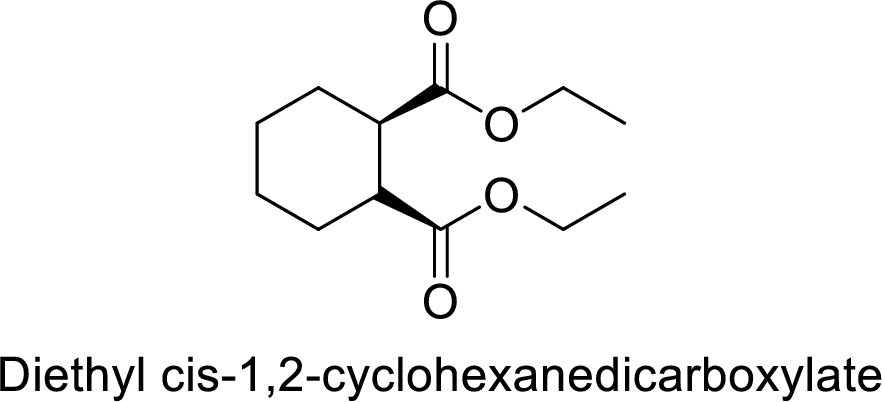
(k)
The structural formula for the given compound has to be drawn.
Concept introduction:
Nomenclature of acid chlorides:
The nomenclture of acid chlorides can be done by replacing –oic acid with –oyl chloride.
(k)
Explanation of Solution
The name of the compound is given below:
Methanesulfonyl chloride
The acid group from the methanesulfonic acid will be replaced by acid chloride group.
Thus, the structure of the compound is given below:
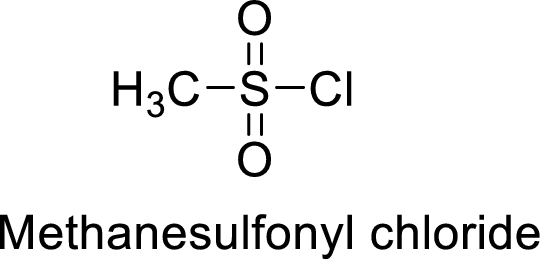
(l)
The structural formula for the given compound has to be drawn.
Concept introduction:
Nomenclature of acid chlorides:
The nomenclture of acid chlorides can be done by replacing –oic acid with –oyl chloride.
(l)
Explanation of Solution
The name of the compound is given below:
p-Toluenesulfonyl chloride
The acid group from the p-toluenesulfonic acid will be replaced by acid chloride group.
Thus, the structure of the compound is given below:
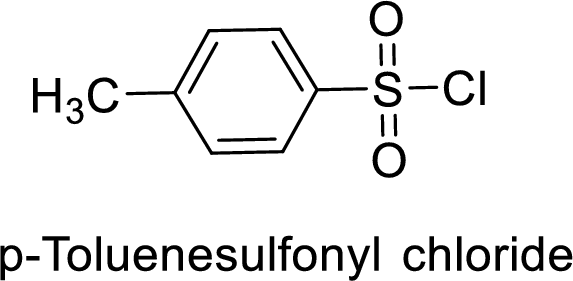
Want to see more full solutions like this?
Chapter 18 Solutions
Organic Chemistry
- For each reaction below, decide if the first stable organic product that forms in solution will create a new CC bond, and check the appropriate box. Next, for each reaction to which you answered "Yes" to in the table, draw this product in the drawing area below. Note for advanced students: for this problem, don't worry if you think this product will continue to react under the current conditions - just focus on the first stable product you expect to form in solution. དྲ。 ✗MgBr ? O CI Will the first product that forms in this reaction create a new C-C bond? Yes No • ? Will the first product that forms in this reaction create a new CC bond? Yes No × : ☐ Xarrow_forwardPredict the major products of this organic reaction: OH NaBH4 H ? CH3OH Note: be sure you use dash and wedge bonds when necessary, for example to distinguish between major products with different stereochemistry. Click and drag to start drawing a structure. ☐ : Sarrow_forwardPredict the major products of this organic reaction: 1. LIAIHA 2. H₂O ? Note: be sure you use dash and wedge bonds when necessary, for example to distinguish between major products with different stereochemistry. Click and drag to start drawing a structure. X : ☐arrow_forward
- For each reaction below, decide if the first stable organic product that forms in solution will create a new C - C bond, and check the appropriate box. Next, for each reaction to which you answered "Yes" to in the table, draw this product in the drawing area below. Note for advanced students: for this problem, don't worry if you think this product will continue to react under the current conditions - just focus on the first stable product you expect to form in solution. NH2 tu ? ? OH Will the first product that forms in this reaction create a new CC bond? Yes No Will the first product that forms in this reaction create a new CC bond? Yes No C $ ©arrow_forwardAs the lead product manager at OrganometALEKS Industries, you are trying to decide if the following reaction will make a molecule with a new C-C bond as its major product: 1. MgCl ? 2. H₂O* If this reaction will work, draw the major organic product or products you would expect in the drawing area below. If there's more than one major product, you can draw them in any arrangement you like. Be sure you use wedge and dash bonds if necessary, for example to distinguish between major products with different stereochemistry. If the major products of this reaction won't have a new CC bond, just check the box under the drawing area and leave it blank. Click and drag to start drawing a structure. This reaction will not make a product with a new CC bond. G marrow_forwardIncluding activity coefficients, find [Hg22+] in saturated Hg2Br2 in 0.00100 M NH4 Ksp Hg2Br2 = 5.6×10-23.arrow_forward
- give example for the following(by equation) a. Converting a water insoluble compound to a soluble one. b. Diazotization reaction form diazonium salt c. coupling reaction of a diazonium salt d. indacator properties of MO e. Diazotization ( diazonium salt of bromobenzene)arrow_forward2-Propanone and ethyllithium are mixed and subsequently acid hydrolyzed. Draw and name the structures of the products.arrow_forward(Methanesulfinyl)methane is reacted with NaH, and then with acetophenone. Draw and name the structures of the products.arrow_forward
- 3-Oxo-butanenitrile and (E)-2-butenal are mixed with sodium ethoxide in ethanol. Draw and name the structures of the products.arrow_forwardWhat is the reason of the following(use equations if possible) a.) In MO preperation through diazotization: Addition of sodium nitrite in acidfied solution in order to form diazonium salt b.) in MO experiment: addition of sodium hydroxide solution in the last step to isolate the product MO. What is the color of MO at low pH c.) In MO experiment: addition of sodium hydroxide solution in the last step to isolate the product MO. What is the color of MO at pH 4.5 d.) Avoiding not cooling down the reaction mixture when preparing the diazonium salt e.) Cbvcarrow_forwardA 0.552-g sample of an unknown acid was dissolved in water to a total volume of 20.0 mL. This sample was titrated with 0.1103 M KOH. The equivalence point occurred at 29.42 mL base added. The pH of the solution at 10.0 mL base added was 3.72. Determine the molar mass of the acid. Determine the Ka of the acid.arrow_forward
 Introduction to General, Organic and BiochemistryChemistryISBN:9781285869759Author:Frederick A. Bettelheim, William H. Brown, Mary K. Campbell, Shawn O. Farrell, Omar TorresPublisher:Cengage Learning
Introduction to General, Organic and BiochemistryChemistryISBN:9781285869759Author:Frederick A. Bettelheim, William H. Brown, Mary K. Campbell, Shawn O. Farrell, Omar TorresPublisher:Cengage Learning
